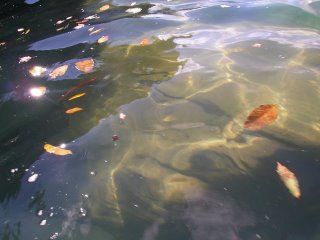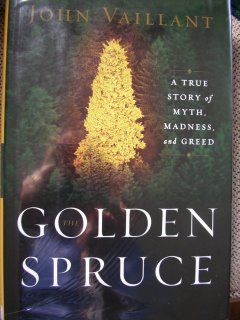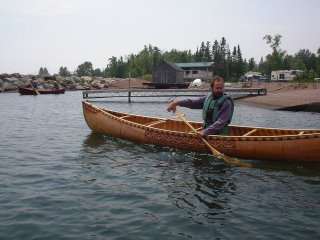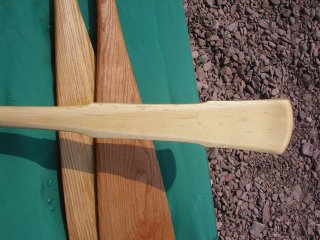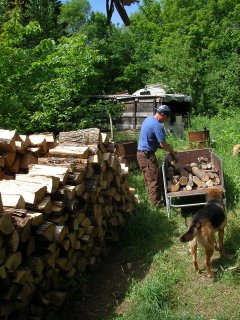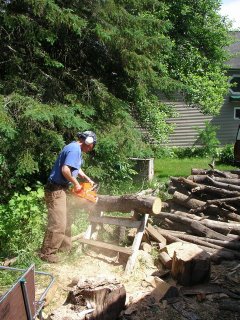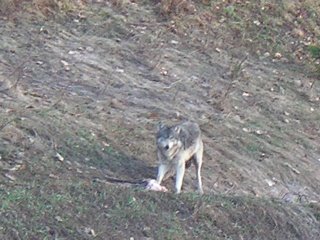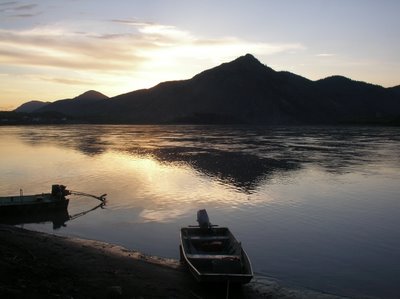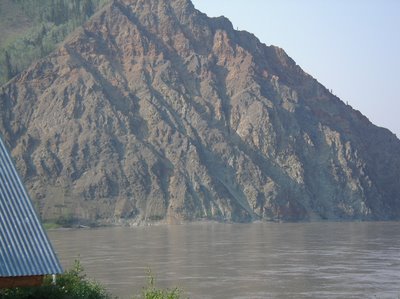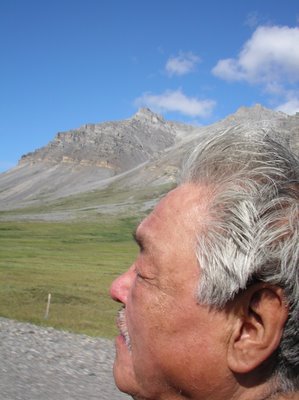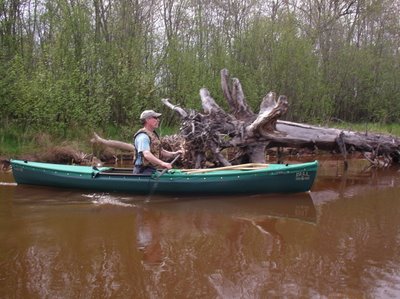
Rhoda Ahgook (L) at the community center city offices in Anaktuvuk Pass, July, 2005

Bob Ahgook, seeking me out at the AKP Community Center
One of the Last of the Elders
Grant Spearman, longest-term resident archaeologist-anthropologist of the Nunamiut Eskimo wrote, "bob ahgook left us on the 14th, his services were on the 22nd. sorry to see him go. Hard to imagine he is really gone."
Bob was a Nunamiut who was always a stalwart upstanding guy; a level and sober influence in Anaktuvuk Pass, who knew both the old ways and the new. A leader and a worker for what was good and right for everyone.
When I became a victim of North Slope Borough politics, when the principal offered me free housing in the Borough "bunkhouse" (which was not school district property to offer), and I was evicted right during the start of the school year, Bob got together the partially completed, decrepit shelter at the air strip, hauled it over to the school district work site and finished the narrow little building with a floor, insulation and plywood walls so that I’d have a place to stay. The village council, that Bob was chief of, offered me 2 lots so I'd have space for my dog team and a place to put the hut on. The principal got greedy as he was prone to be (he was prosecuted 2 years later for embezzlement) and said that the building had to stay on school district property. The village council let the offer of 2 lots stand, but I didn't have the time to put up a "soddy"as well as the ground was frozen by that time. I ended up leaving after that winter and so never had the means to fly in materials to put in a dwelling. The lots were on the other side of the Contact Creek, that had no houses when I was living in AKP but is now a bustling part of the village. I visited Bob and Rhoda, his wife there last summer. As a resident of Anaktuvuk Pass, I was a frequent visitor to Bob and Rhoda’s house in the middle of the older village for tea, caribou "fry" and Eskimo donuts. Bob would always look kindly at me and ask when I came in, "How’s Donwatson doing today?" We would talk about hunting, the land and commonplace topics, whatever I wanted to talk about, and often not talk, but just be there and observe the goings-on of the Ahgook household. Bob and Rhoda’s children were always intellectually sharp and respectful. Rhoda was cut of the traditional Nunamiut cloth; happy unceasingly with her family and life.
Bob worked closely with the old wolf biologist, Bob Stephenson and was who some wolf chronicler was referring to who said that the Nunamiut "have the greatest practical knowledge of the Arctic wolf of any people in the world". Bob wasn’t one to talk very much about the old nomadic way of life that these one and only mountain Eskimos used to live, at least to me. One pet peeve that he did voice to me was that the Nunamiut didn’t follow the caribou, as some journalists and scientists have said. "No, we never followed the caribou! We waited for them to come to us", he would say in mock disgust.
Bob always enjoyed having mechanical stuff. His snowmachines were always in good repair, he was one of the first, if not the first to have a car(jeep) in the village. When I was visiting the village the summer of 2005, Bob had a compact car as well as a full size pickup truck. His Argo ATV sat in his front yard. Bob’s quiet wisdom was always present, whether hunting or in the village. Bob worked a regular day job - maintenance for the borough. His mechanical abilities were sure and he used power tools safely.
Bob came down to the plane that I was supposed to arrive in to see me after all of 27 years of separation. Unfortunately I arrived in an earlier flight. I was picked up by Harry Hugo at the plane. He was the baggage handler and took me around to the clinic and community center. Bob and Rhoda came over to the community center offices to visit and wish me welcome.
Bob was having difficulty health-wise in his last years. He had heart bypass surgery; after that he complained of a lack of energy and his life slowing down, almost intolerably so for him. As he was telling me this, Rhoda was bustling around Bob, doing the little chores that a good mate does for the other, as an assurance to the other that all isn’t yet lost, that they still have each other and the big extended family of their village. Rhoda said this only through her body language and activity of domestic serving. At their home, in the morning after visiting with their son Jimmy, with Sandy Hamilton there for coffee (another great reunion for me), Bob was telling us this and he seemed more distant. Not feeling as good as he would like, perhaps knowing that there was cancer gathering in his body, that would cause him to have to be medivaced to Fairbanks a couple of months after my visit. As he sat in his living room, the TV on as a diversion, I think we both knew that this was the last time we would see each other again, that it was a wonder that I was back again. Few of the "tanniks" ever did return, at least not if they didn’t return due to a job. Not much, really, to say. Good knowing you many years ago...
Jimmy and I left with a goodbye, walked out through the entryway and over to Sue Hugo’s house, in a hurry before my plane came in, sad that I didn’t have more time to spend with the people who I had done so much growing up with as a young man.


